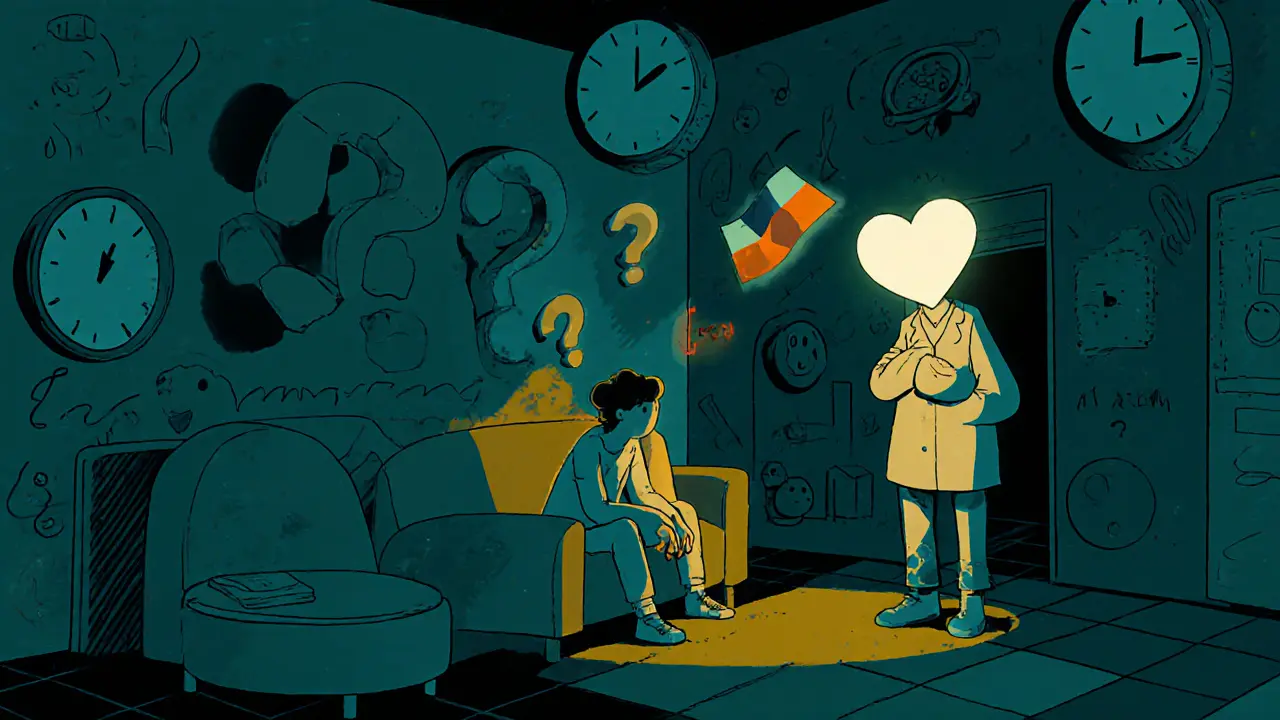Anamnéza klienta: Co obsahuje a proč je klíčová pro úspěšnou psychoterapii
When you start therapy, the first thing you’ll be asked for is anamnéza klienta, soubor informací o vašem životě, zdraví a psychických potížích, který terapeut používá k pochopení vašeho případu. Also known as počáteční vyšetření, it’s not just a form you fill out—it’s the foundation for everything that comes after. Many people think it’s just a list of symptoms or past diagnoses, but it’s much more than that. It’s your story, told in your words, shaped to help someone who wants to understand you—not to judge you.
This process isn’t about impressing your therapist. It’s about giving them the real picture: when your struggles started, what triggers them, how they affect your sleep, work, or relationships, and whether you’ve tried anything before. Did you take medication? Did therapy help before? Did something traumatic happen that you’ve never talked about? These details matter. They’re not random questions—they’re pieces of a puzzle. And without them, even the best therapist is guessing.
There’s also a hidden benefit: filling out your anamnéza klienta, strukturovaný přehled vašich životních okolností, který slouží jako základ pro individuální terapeutický plán. Also known as vstupní hodnocení, it helps you reflect on your own life as you answer the questions. You might notice patterns you hadn’t seen before—like how stress always spikes during family gatherings, or how your mood drops every time you skip movement for days. That self-awareness? That’s already progress.
And it’s not just about you. Your therapist’s ability to choose the right approach—whether it’s cognitive behavioral therapy, trauma-focused work, or systemic family methods—depends on what they learn here. If you’ve had childhood trauma, they’ll adjust pacing. If you’re struggling with anxiety and sleep, they’ll know to prioritize regulation tools. If you’re in a relationship crisis, they’ll look for relational patterns. All of this comes from the anamnéza klienta, důkladný dokument, který spojuje vaše minulé zkušenosti s aktuálními potřebami v terapii. Also known as klinický přehled, it enables personalized care.
You might feel nervous about sharing personal things. That’s normal. But remember: this isn’t a test. There are no right or wrong answers. Even silence, hesitation, or saying "I don’t know" tells your therapist something important. They’re trained to read between the lines—not to catch you in a lie, but to understand what you’re avoiding, what hurts, or what you’re afraid to say.
And if you’ve been to therapy before? Great. Bring that too. Past experiences—even failed ones—help your new therapist avoid repeating mistakes. Maybe your last therapist pushed too fast. Maybe you felt misunderstood. Tell them. That’s part of the anamnéza too.
Below, you’ll find articles that explain how this process connects to everything else: how therapists use this information to build safety, how it ties into trauma work, how it affects pricing and accessibility, and why it’s not just paperwork—it’s the first step toward real change. Whether you’re just starting out or wondering why your therapist keeps asking the same questions, these posts will show you what’s really going on behind the scenes.
Jak vypadá úvodní anamnéza v psychoterapii: Co se terapeut ptá a proč
Úvodní anamnéza v psychoterapii je klíčový proces, který pomáhá terapeutovi pochopit, proč se něco děje právě teď. Zjistěte, jaké otázky se vás ptají a proč jsou tak důležité pro vaši léčbu.





